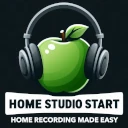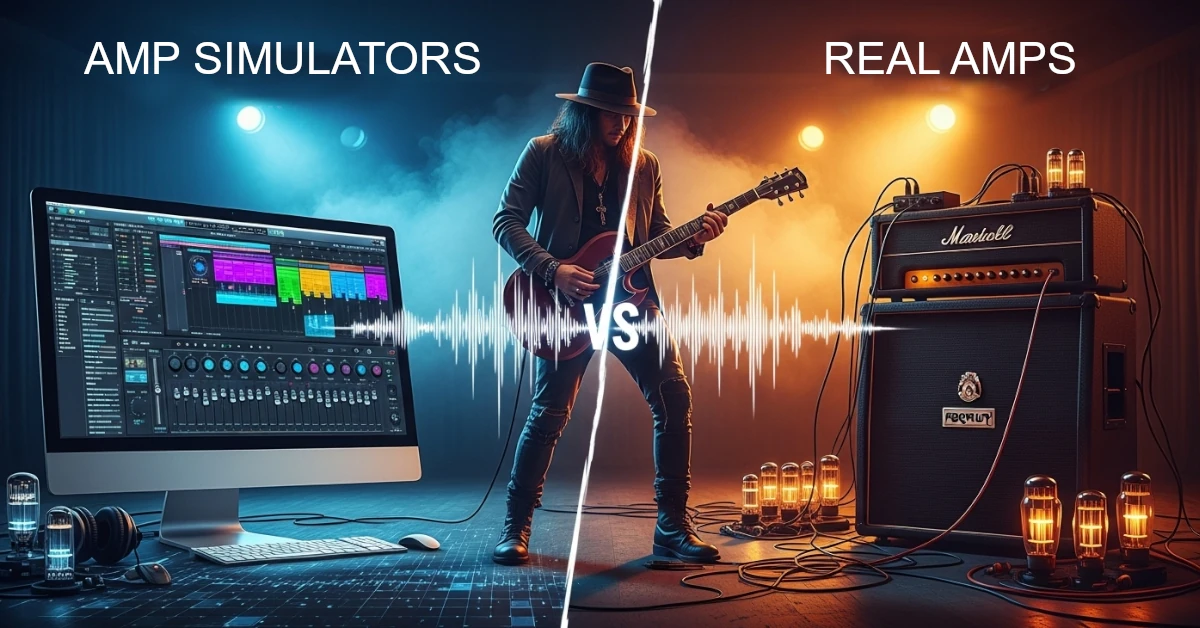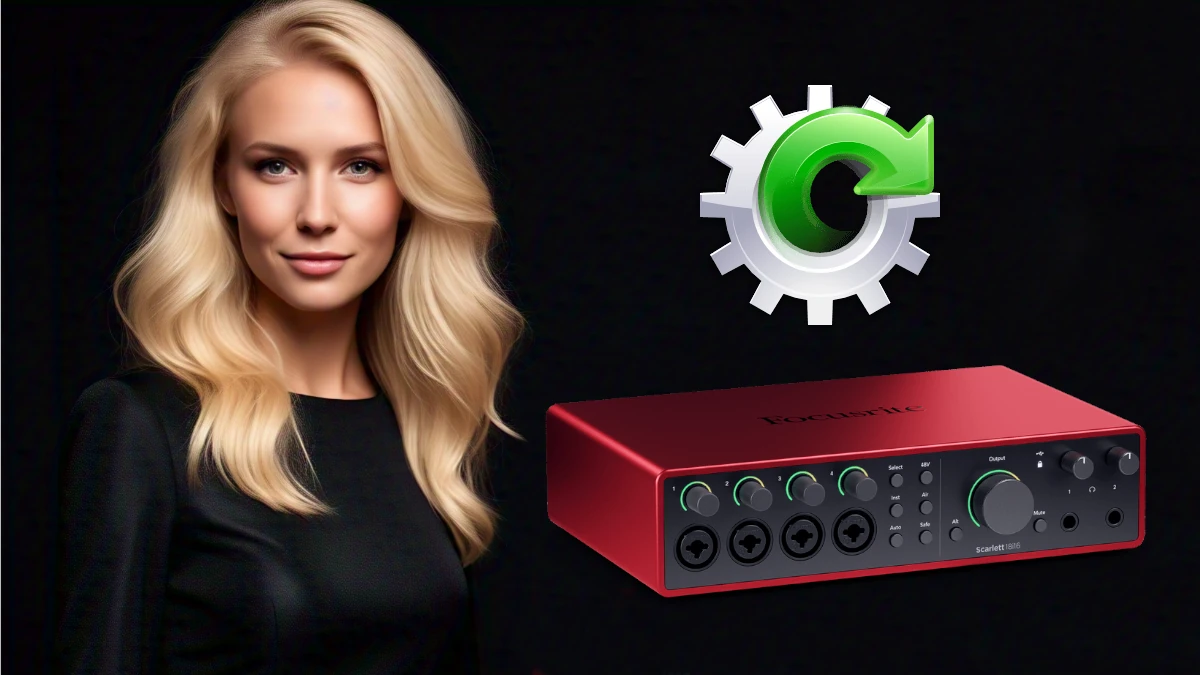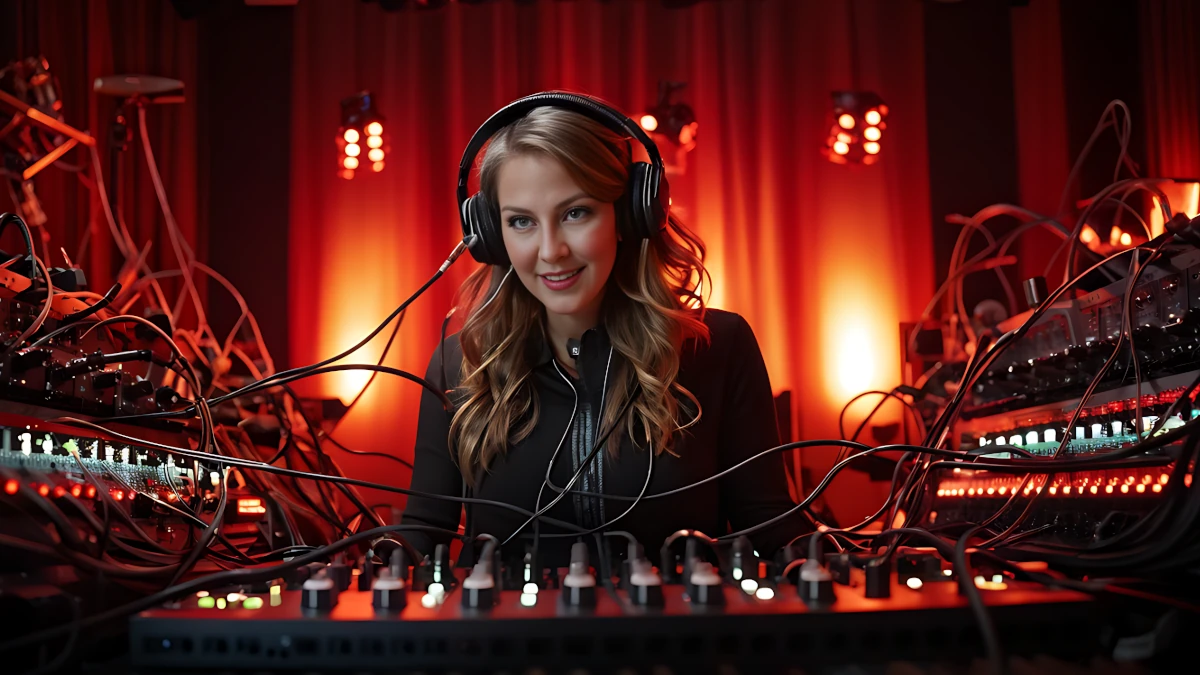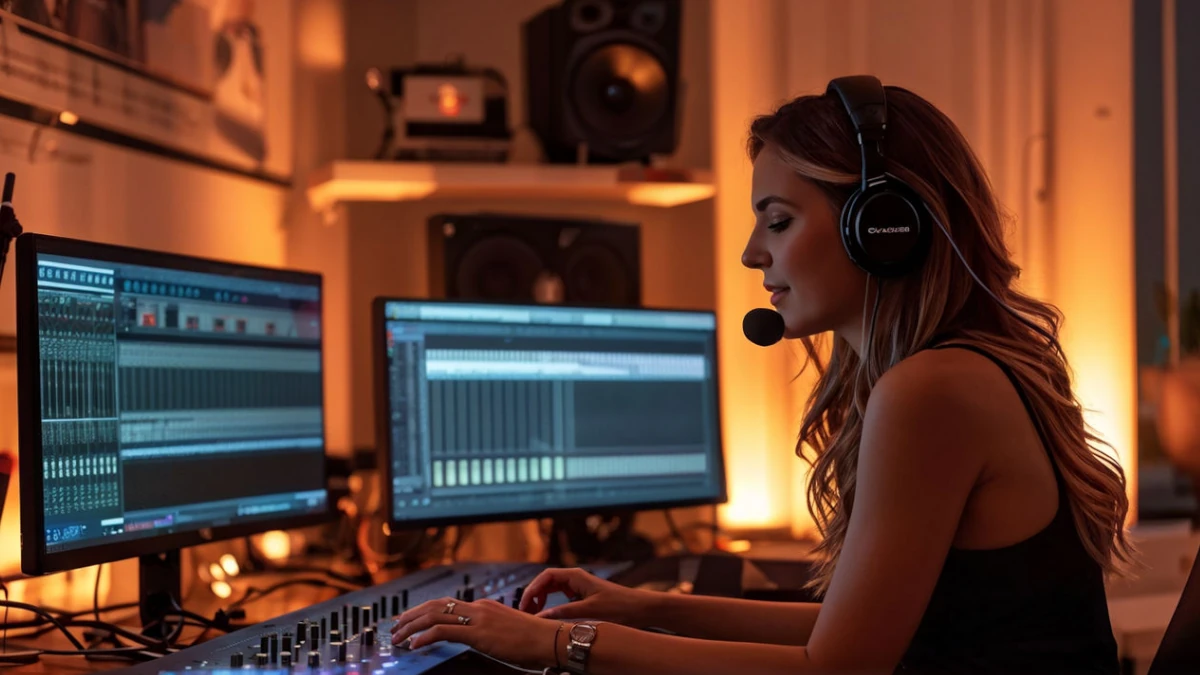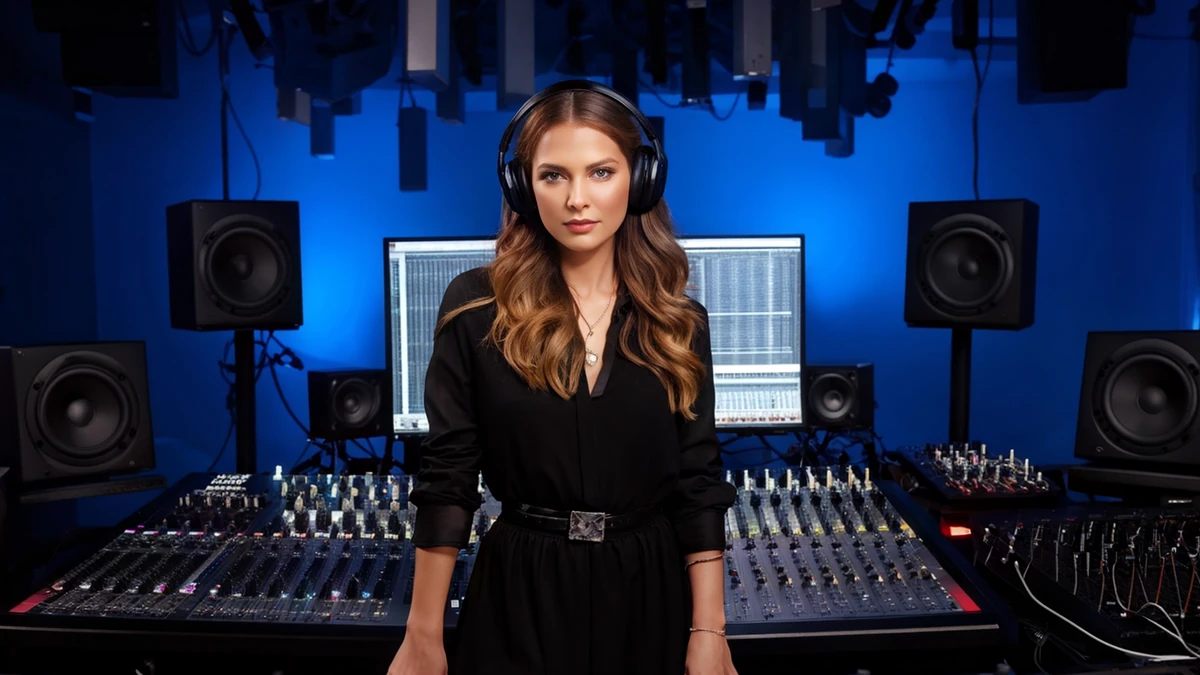Struggling to decide between the convenience of amp sims and the raw power of real amps? You’re not alone! This article breaks down the ultimate amp showdown to help you choose the best tool for your sound. First, we’ll explore the pros and cons of amp sims for today’s guitarists, highlighting their flexibility and cost-effectiveness. Then, we’ll dive into the world of real amps, discussing the unique tone, feel, and live experience they offer. Next up, we’ll put them head-to-head with a sound comparison, including audio examples to showcase the nuances. Finally, we’ll provide practical guidance on when to use amp sims vs. real amps, helping you make the right choice for any situation.
Essential Equipment
Top 5 Audio Interfaces for Podcasting: Budget to Professional
Want to transform your podcast from sounding ‘meh’ to ‘WOW!’? It all starts with the unsung hero of audio quality: the audio interface. This guide will navigate you through the essential aspects of choosing the perfect interface, tailored to your podcasting needs and budget.
- Understanding Audio Interfaces for Podcasting: We’ll demystify what an audio interface is, its crucial role in podcasting, and key features to look for, whether you’re a solo podcaster or running a multi-guest show.
- Budget-Friendly Audio Interfaces for Podcasting: Discover that excellent audio quality doesn’t require emptying your wallet. We’ll explore affordable options that deliver impressive performance for beginners and those on a tight budget.
- Mid-Range Audio Interfaces: Stepping Up Your Podcast Quality: Ready to take your podcast to the next level? We’ll delve into mid-range interfaces with enhanced features and improved audio fidelity, setting you apart from the competition.
- Professional-Grade Audio Interfaces for Podcasting: The Ultimate Investment: For podcasters who demand the best, we’ll showcase professional-grade interfaces offering pristine audio, advanced routing options, and exceptional build quality.
Why Updating Your Audio Interface Firmware is Essential
Picture this: you’re in the middle of producing what could be your next big hit. The bassline is thumping, the vocals are soaring, and you can already visualize the crowd vibing to your groove. Suddenly, your audio interface glitches, sounds drop out, or, even worse, your DAW crashes! Frustration sets in, and all that creative momentum is lost. Sound familiar? Keeping your audio interface firmware and software updated can save you from this nightmare!
Upgrading your audio gear’s firmware and software is the unsung hero of music production. Think of it as giving your favorite instrument a shiny new set of strings – it can elevate your sound quality, enhance performance, and prevent technical hiccups. But why is it so crucial? In this blog post, we’re going to dive deep into the world of audio interfaces, exploring the compelling reasons behind firmware updates and how they can amp up your production game. Get ready to unlock the potential of your gear and create like never before!
Essential Cables for a Professional Home Recording Studio
When diving into home recording, selecting the right cables is crucial. These seemingly simple components play a vital role in the quality of your recordings. High-quality cables ensure clear sound transmission and minimal interference, making your studio setup efficient and professional.
Every piece of equipment in your studio relies on cables to transmit audio signals. From microphones to instruments, and from digital interfaces to monitors, the correct cables can prevent signal loss, reduce noise, and enhance overall sound quality. Understanding the different types of cables and their specific uses will help you make informed decisions, ensuring a seamless and productive recording experience.
Whether you’re a beginner setting up your first studio or an experienced musician upgrading your setup, knowing which cables to invest in is essential. In the following sections, we’ll explore the various types of cables you’ll need, their uses, and tips on choosing the best options for your home studio.
For those just starting, consider this comprehensive guide on building your home studio, which provides a detailed overview of essential equipment and setup tips.
Unlock Pro Sound: Top Audio Interface Picks for Musicians and Podcasters
When it comes to building a home studio, choosing the right audio interface is a crucial decision that can make or break your recording experience. But before you start browsing through the numerous options available in the market, it’s essential to identify your recording needs. What type of recordings do you plan to make? How many instruments or microphones do you need to connect? What level of sound quality are you aiming for?
Answering these questions will help you determine the specifications you require from an audio interface. For instance, if you’re a singer-songwriter who only records vocals and acoustic guitar, you might not need a high-end interface with multiple inputs. On the other hand, if you’re a music producer who works with multiple musicians and instruments, you’ll need an interface that can handle a higher number of inputs and outputs.
To get started, take a step back and assess your recording goals. What kind of music do you want to produce? Do you need to record live instruments or will you be working with virtual instruments? How important is sound quality to you? Are you looking for a professional-grade recording or just something to get started with?
If you’re new to home recording, it’s a good idea to start with the basics. Check out this helpful guide on First Steps on How to Build an Audio Home Studio to get a better understanding of what you need to get started.
By understanding your recording needs, you’ll be able to narrow down your options and choose an audio interface that meets your specific requirements. In the next section, we’ll explore the different types of audio interfaces available in the market, including USB, FireWire, Thunderbolt, and MIDI interfaces.
Master MIDI Controllers: Boost Your Home Studio Production
MIDI controllers and interfaces are essential tools for modern music production. MIDI, or Musical Instrument Digital Interface, is a technical standard that allows electronic musical instruments, computers, and other devices to communicate and synchronize with each other. The MIDI controllers send performance data, such as notes played on a keyboard or drum hits on a pad, to computers or other instruments, which then produce sound. Meanwhile, MIDI interfaces act as the bridge between your instruments and your computer, ensuring smooth data transfer.
USB vs. FireWire: Best Audio Interface for Home Studios
Audio interfaces are essential for any musician or audio engineer looking to record high-quality sound. These devices act as the bridge between your instruments or microphones and your computer, converting analog signals into digital ones. Without an audio interface, capturing the nuances and details of your music would be challenging, if not impossible.
In this blog post, we will explore the differences between USB and FireWire audio interfaces, two of the most common types available. By understanding their unique features, advantages, and potential drawbacks, you can make an informed decision about which interface suits your needs best.
Whether you’re setting up your first home studio or upgrading an existing one, choosing the right audio interface is crucial. For beginners, USB interfaces often provide a more straightforward and cost-effective solution. FireWire interfaces, on the other hand, are known for their high data transfer rates and reliability, making them a favorite among professional users.
To help you navigate this decision, we will break down the key aspects of each type of interface, from speed and performance to compatibility and practical considerations.
By the end of this post, you’ll have a clear understanding of the pros and cons of USB and FireWire audio interfaces, empowering you to choose the best option for your recording needs. Let’s dive in and discover which interface will elevate your music production to the next level.
Studio Monitors vs. Headphones: Best for Music Production
Table of Contents
- Studio Monitors: The Backbone of Professional Studios
- Headphones: The Portable Solution
- When to Use Studio Monitors
- When to Use Headphones
- Conclusion: Finding the Balance
Choosing between studio monitors and headphones is a common dilemma for music producers. Both tools are essential in a studio setting, each offering unique advantages that cater to different aspects of music production. Studio monitors are renowned for their accurate sound representation, providing a flat frequency response that reveals the true nature of a recording. On the other hand, headphones offer unparalleled portability and isolation, making them ideal for detailed editing and on-the-go production.
Understanding the strengths and weaknesses of each can help you make an informed decision. Whether you’re mixing and mastering tracks or working late at night without disturbing others, the right choice can significantly impact the quality of your work. In this blog post, we will explore the benefits and drawbacks of studio monitors and headphones, guiding you on when to use each tool for optimal results in your music production journey.
